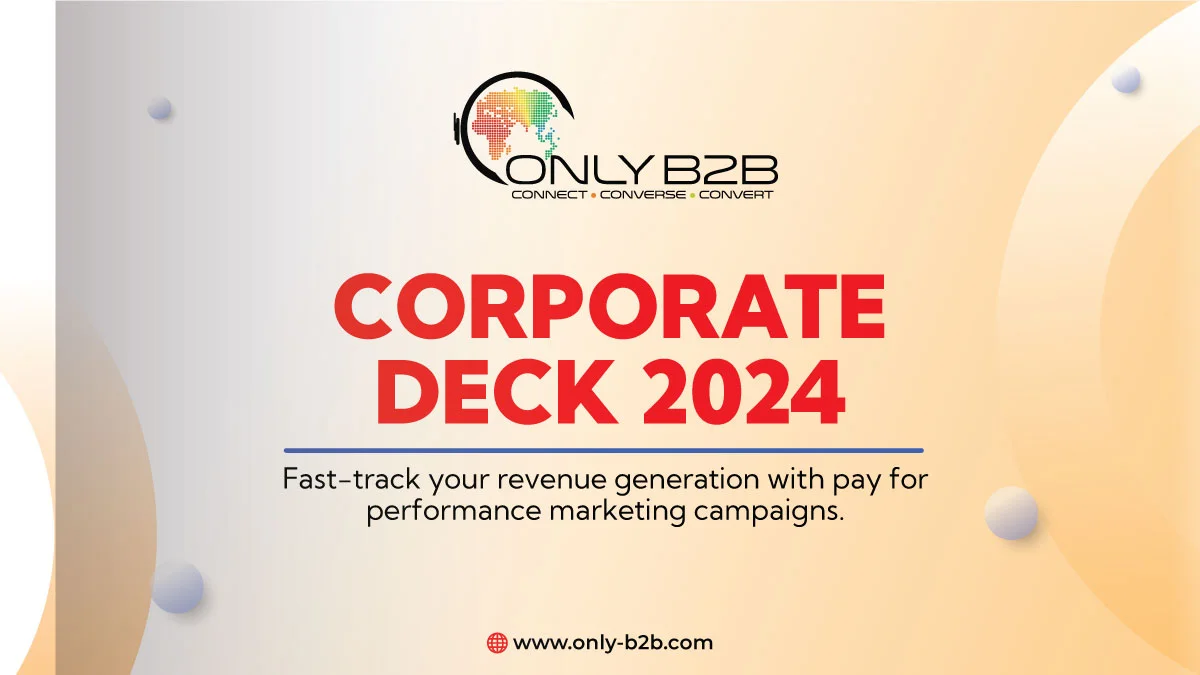
ABM has gained significant prominence among B2B marketing companies in recent years. According to a Sirius Decisions poll, over 90% of B2B marketers believe ABM is a vital element of their marketing strategy. Intent data is the most important resource that B2B companies with an ABM strategy have at their fingertips.
The truth is that consumers all around the world are continuously releasing intent data. According to a blog by Forbes, Every day, approximately 2.5 quintillion bytes of data is utilized, This data comprises factors of what individuals do online, what they post on social media (LinkedIn, Twitter, Instagram, Facebook), what clips they watch online, and so on.
But here’s the catch: just a few firms seek to combine data from various sources in order to improve their ABM programs. Instead, many businesses concentrate on their own observations. While this still offers a significant quantity of insightful data, it also leaves a significant amount of data unexplored.
B2B firms should leverage buyer data from many channels to enhance their sales and marketing operations in order to thrive in ABM. Using intent data to broaden their scope and acquire insights about their target audiences that they would not ordinarily be able to gather on their own is a smart method to do it.
So, how can B2B businesses leverage intent data to fuel their ABM strategies? We’ll walk you through a step-by-step method for incorporating intent data into your ABM program.
Must Read: Measuring the ROI of Your Account based marketing Strategy : Key Metrics to Track for Success
5 Ways to Use Intent Data in ABM Programs
1. Compile Intent Data
The practice of employing intent data in ABM programs begins with obtaining it from various sources, both internal and external (third party) to the organization.
The truth is that the best method for B2B businesses to determine who is engaged in their products is to look at who is approaching them. You’ll need to pay close attention to the first-party intent data to figure this out. This is the information that customers provide when they approach your business.
First-party intent data can be mined from a variety of sources.
- Contact forms on a website
- Questions frequently asked to your chat-bot
- Inquiries received through email

Source: SlideShare
As long as the customers that contact B2B firms meet their desired customer model, first-party intent data is considered as high-quality ABM data. With such potential, the only thing the business needs to do is close deals.
2. Categorize Intent Data
Even if all intent data is useful to a business, it’s vital to remember that prospects will approach you for a variety of reasons. Some may be looking for knowledge on how to address a problem, while others will be looking to buy, whilst others will want technical assistance.
You may limit down to leads who are interested in acquiring your service by identifying inbound contacts and accounts based on relevance and any other parameters you use to determine potential consumers.
The goal of categorizing intent data is to guarantee that the buyer signals given are accurate representations of their intent data. Collect and interpret first-party intent data thoughtfully and regulate your expectations to effectively categorize your intent data.
Must Read: The Advantages of Employing Intent Data In B2B Marketing
3. Increase the effectiveness of your content marketing strategy
It’s important to tailor your marketing content to the demands of certain target audiences if you want your ABM campaign to succeed. To do so successfully, B2B firms must integrate first-party and third-party intent data to gain a broader understanding of prospects’ needs.
The truth is that first-party intent data simply provides a glimpse of prospect activity on-site. Third-party data, on the other hand, covers a wider range of information, including insights into prospects’ research activity on other websites.
Furthermore, early in the purchase process, possibilities for customizing content are discovered and utilized. This allows B2B businesses to get the most out of their content marketing efforts.
4. Score and Nurture Leads
The capacity of any B2B company to grasp prospect intent is critical to identifying marketing and sales qualified leads. Intent data is now at the center of finding qualified leads.

Source: MoAgency
Intent data is a type of data that uses a prospect’s online activity to discover qualified leads with a high degree of certainty. This data may be used by ABM teams to:
- Boost your lead scoring
- Improve your ability to predict outcomes.
- Make prospect accounts a top priority.
- Make better use of existing resources
Because intent data is so crucial in helping marketers comprehend their prospects, it allows businesses to successfully target prospects throughout their buying experience.
5. Shorten the sales process
The B2B purchase cycle is long and complicated since it includes several decision makers. As a result, sales and marketing teams must devote a significant amount of time and attention to moving prospects through the sales pipeline.
Intent data aids in the speeding up of this process by removing calls and emails from prospects who are unlikely to make a purchase in the near future. The information may also assist businesses in avoiding cold calls, which can slow down the sales process and waste resources.
According to a Sirius Decisions report, 67% of B2B buyer’s journey is completed online.
Instead of concentrating on low-value prospects, marketers may leverage signs from intent data to effectively attract high-value clients.
Must Read: How To Select A Intent Data Vendor
Wrapping Up
Data allows organizations to make educated decisions in today’s complicated business climate. In marketing, intent data is a valuable resource that helps B2B marketers expand their ABM programs.
Intent data assists B2B marketers in better understanding potential consumers, allowing them to identify slightly elevated customers and nurture them through tailored content and programs. If you’re already utilizing ABM marketing, intent data will help you improve your strategy. By following the five steps outlined above, you may include it into your ABM program right now.
Want to unlock the mysteries of B2B marketing? Contact Only-B2B today
– we’d be happy to help.

Vikas Bhatt is the Co-Founder of ONLY B2B, a premium B2B lead generation company that specializes in helping businesses achieve their growth objectives through targeted marketing & sales campaigns. With 10+ years of experience in the industry, Vikas has a deep understanding of the challenges faced by businesses today and has developed a unique approach to lead generation that has helped clients across a range of industries around the globe. As a thought leader in the B2B marketing community, ONLY B2B specializes in demand generation, content syndication, database services and more.


